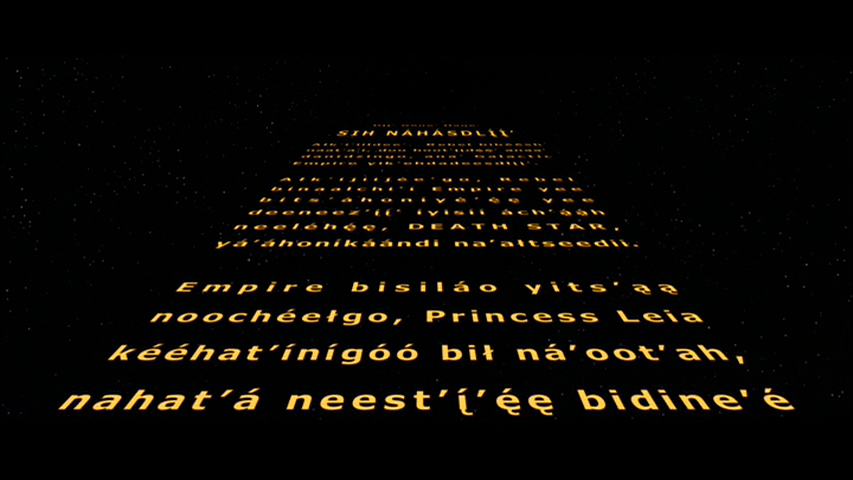
“Spaceship” isn’t a common Navajo word. But actor James June used it a lot while working on a Navajo language version of “Star Wars IV: A New Hope.”
“It is not very often that you hear spaceship every day,” June said. “That was a new word that we had to learn. For me, it was hard. I never realized that modern Navajo has a lot of slang to it. And to speak the proper Navajo language was really challenging for me.”
“Star Wars IV: A New Hope” in Navajo played at Twin Arrows March 29 before a crowd of about 150 people – it is the first major motion picture where Navajo is spoken throughout the movie in an effort to have people learn and be engaged with the Navajo language.
Manny Wheeler is the director of the Navajo Nation Museum. In 2013, he worked with a small group of people to dub the movie into Navajo. He said the voice performances in Navajo took only 90 days to record – where a usual dubbing of a movie in Hollywood would take six to eight months.
“That is a huge feat,” Wheeler said. “From the moment they started translating to the moment we showed it at the Fourth of July fair, it was 90 days. Even by Hollywood standards that is a very, very big accomplishment. There were a lot of people who worked really hard to make it happen…”
“We’re doing it to bring awareness to language preservation,” Wheeler said. “We’re trying to say the language and we’re trying to bring awareness. With this, I really think we’re bringing awareness because the movie by itself isn’t going to save our language but it is going to lead to other things. In a sense we are saving our language. But, more importantly right now, we’re bringing awareness as to why we should know our language.”
A truly worthwhile read. I guess most Americans haven’t confronted language and culture preservation once they’re 2nd or 3rd generation-born in the USA. For Native Americans, for many immigrants, these are critical questions. More so – in my mind – for First Nation folks because every tribal reservation, every independent nation is surrounded by an American, Canadian or Mexican society that consciously or otherwise considers itself superior.
Language is so much a part of the process. Both my Canadian-Scots grandfather and my Italian grandfather forgot their native language entirely out of dedication to “fitting in”. Eduardo Trotta was pushed into the process the day he left Ellis Island by a bureaucrat who decided his name should be Edward Trotter.
RTFA. It prompts and provokes discussions that are especially relevant in a society that in daily practice rarely considers the topic important.
Who-smiles-like-a-bear

